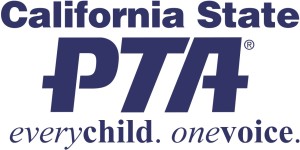Prepare a needs assessment worksheet including the name of the PTA, the school, and the identified concern in appropriate places (Needs Assessment Worksheet).
Determine who is to receive the needs assessment form, how it is to be distributed and the due date for the return. Determine method of follow-up.
Survey appropriate agencies to obtain statistics on the identified concern. This can be done by making personal contacts or by sending a cover letter and the needs assessment form to some or all of the people and agencies listed below.
- School personnel;
- Private and church-related programs;
- Chamber of Commerce and major employers;
- Local, county, state, federal departments of health, education, probation and social services;
- Libraries;
- Professional and volunteer agencies; and
- Community organizations.
Obtain statistics reflecting the community’s ethnic and socioeconomic background. Information may be obtained from the school district office and will be necessary if the PTA will apply for a grant to fund this project.
Evaluate information received. Review all data and compile the responses to the questions on the needs assessment form. Determine whether the school and community concur with the identified concern and believe that a problem exists.
If it is determined that a problem exists, the information gathered will be a basis for the formulation of a community action plan. If it is determined that a problem does not exist or is not of concern to the school and community, it is best not to invest time and money in seeking solutions.
Prepare a final report that includes the following information:
- Reason for the study;
- Statistics that note the numbers by age, socio-economic status, ethnic background, or religious affiliation;
- Community responses;
- Professional resource people interviewed and their responses;
- Other resources used, such as periodicals, books, films, and surveys; and
- Findings that indicate whether a problem exists that requires further action.
As a courtesy, distribute the report to those who participated in the survey. It will compensate them for their cooperation and will raise the level of awareness within the community.
Use the report as a tool in developing and implementing a plan of action. A Sample Agenda for Needs Assessment (Fig. P-2) for a meeting to discuss the findings follows.
SAMPLE AGENDA FOR NEEDS ASSESSMENT
CHAIRMAN
Welcome
Introduction of facilitator, recorder, secretary, group members (invited participants)
Explain roles of those introduced
FACILITATOR
Facilitator conducts balance of meeting, and chairman becomes a group member.
Discuss needs assessment
Define the problem
- brainstorm ideas
- prioritize ideas
- develop problem statement(s)
Develop solutions
- brainstorm ideas
- prioritize ideas
- develop solution statement(s)
Develop a tentative action plan
- brainstorm ideas
- prioritize ideas
- examine possible obstacles to plan implementation
- develop ways to remove any obstacles OR develop alternative plans
Develop final action plan that includes
- all components (parts of the plan)
- individual assignments
- time frame
- budget needs
- evaluation method
- date for final evaluation
If unable to complete the agenda in the allotted time, set date, time and place for another meeting. At the next meeting, review any statements agreed to at the prior meeting and complete the rest of the agenda. Allow time for discussion of additional information obtained between meetings.
Figure P-2
